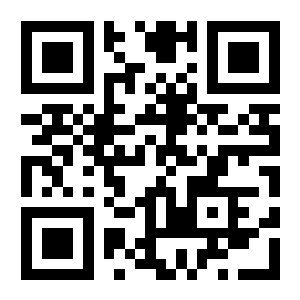How Does QR Code Work? A Comprehensive Guide
Published on August 5, 2023
In this digital age, Quick Response (QR) codes have become an integral part of our daily lives. These square-shaped codes are seemingly everywhere. But have you ever wondered how QR codes work? In this article, we'll take a deep dive into the fascinating world of QR codes, understanding their inner workings, applications, and the technology behind them.
1. What is a QR Code?
A QR code is a two-dimensional barcode that contains encoded information in the form of black modules arranged in a square pattern on a white background. Initially designed for automotive industry applications in Japan, QR codes have now gained universal popularity due to their ability to store large amounts of data.
2. QR Code Structure
To understand how QR codes work, let's dissect their structure. A typical QR code consists of three main components:

Finder Patterns:
These are the three square patterns located at the corners of the QR code. Their primary function is to help scanning devices detect and orient the code correctly.
Data Modules:
The black and white squares that form the bulk of the QR code are the data modules. Each module represents a binary digit, and their arrangement encodes the information.
Alignment Patterns:
Alignment patterns are additional smaller squares placed within the QR code. They assist in error correction and ensure accurate scanning even if the code is partially obscured or damaged.
3. How QR Codes Work
The working of QR codes can be broken down into four key steps:
Encoding Data:
When you input data, such as a URL, contact information, or a piece of text, into a QR code generator, the software encodes the data into a series of binary digits. This encoded information is then converted into the QR code's pattern of black and white modules.
Error Correction:
QR codes use sophisticated error correction algorithms to ensure data integrity. Even if a part of the code is damaged or obscured, these algorithms can reconstruct the original information accurately.
The level of error correction in a QR code is denoted by four different error correction levels: L, M, Q, and H. Each error correction level provides a different level of redundancy, allowing QR codes to recover from varying degrees of damage.
- Level L (Low Error Correction):
- Provides the low level of redundancy.
- Suitable for applications where the QR code is unlikely to be damaged, such as indoor use or controlled environments.
- Can recover up to approximately 7% of data errors.
- Level M (Medium Error Correction):
- A moderate level of redundancy.
- Maintains a balance between error correction and data capacity.
- Suitable for most general-purpose applications.
- Can recover up to approximately 15% of data errors.
- Level Q (Quartile Error Correction):
- A higher level of redundancy than Level M.
- Suitable for applications where the QR code may be exposed to some environmental challenges or wear.
- Can recover up to approximately 25% of data errors.
- Level H (High Error Correction):
- Provides the highest level of redundancy and error correction capability.
- Most suitable for applications where the QR code may be subject to severe damage or challenging conditions, such as outdoor use or on rugged materials.
- Can recover up to approximately 30% of data errors.
- Level L (Low Error Correction):
Scanning:
To read the data from a QR code, you need a QR code scanner or reader. Most smartphones today come with built-in QR code scanners in their camera apps. When you scan a QR code, the reader decodes the pattern of black and white modules back into binary data.
Executing the Data:
Once the binary data is decoded, the QR code reader executes the information based on its type. For instance, if the QR code contained a URL, the reader would open the corresponding webpage.
4. Popular Applications of QR Codes
QR codes find extensive use in various fields due to their versatility and ease of use. Some popular applications include:
Marketing and Advertising:
QR codes are widely used in marketing campaigns to provide quick access to product information, promotional offers, or links to websites.
Mobile Payments:
They facilitate seamless mobile payments by encoding payment information, allowing users to make transactions conveniently.
Product Tracking:
In supply chain management, QR codes are used to track products from manufacturing to distribution, ensuring transparency and efficiency.
Event Management:
QR codes on event tickets or badges expedite check-ins and grant access to event-related content.
5. Tips for Creating Effective QR Codes
To ensure your QR codes are optimized for success, consider the following tips:
Size and Placement:
Ensure your QR code is of an appropriate size and placed in areas with sufficient lighting and accessibility for scanning.
Error Correction Level:
Select the appropriate level of error correction based on the intended usage and potential risks of code damage.
Call-to-Action:
Accompany the QR code with a proper call-to-action, instructing users on what they can expect after scanning.
6. Conclusion
In conclusion, QR codes are a remarkable example of efficient data storage and retrieval. Their ability to store large amounts of information, combined with their ease of use, has made them an invaluable tool across numerous industries. Understanding how QR codes work empowers businesses and individuals to harness their potential fully. So the next time you encounter a QR code, you'll appreciate the technology behind its seamless functioning.
Happy learning!
- Converting an Angular Application to Angular Universal for Server-Side Rendering (SSR) [2024 latest]
- Step-by-Step Guide: Deploying Angular Universal on Ubuntu 22 LTS with Nginx and SSL [2024 latest]
- How Does QR Code Work? A Comprehensive Guide
- How to generate .pem Private and Public Key Files on Mac and Windows? [2024 latest]